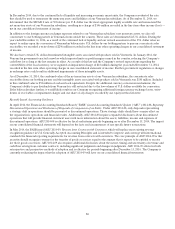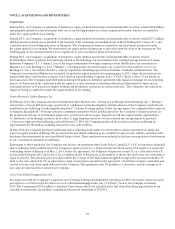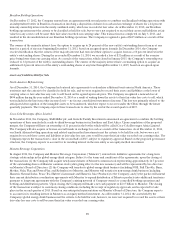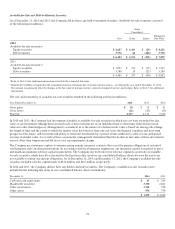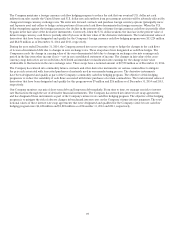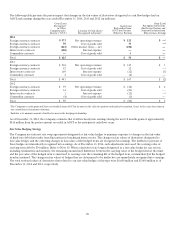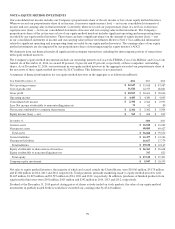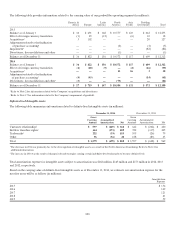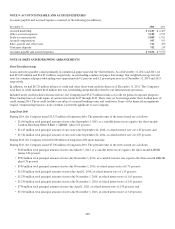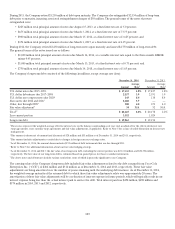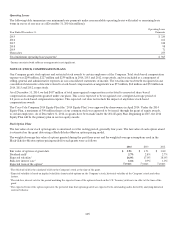Coca Cola 2014 Annual Report Download - page 97
Download and view the complete annual report
Please find page 97 of the 2014 Coca Cola annual report below. You can navigate through the pages in the report by either clicking on the pages listed below, or by using the keyword search tool below to find specific information within the annual report.95
The Company maintains a foreign currency cash flow hedging program to reduce the risk that our eventual U.S. dollar net cash
inflows from sales outside the United States and U.S. dollar net cash outflows from procurement activities will be adversely affected by
changes in foreign currency exchange rates. We enter into forward contracts and purchase foreign currency options (principally euros
and Japanese yen) and collars to hedge certain portions of forecasted cash flows denominated in foreign currencies. When the U.S.
dollar strengthens against the foreign currencies, the decline in the present value of future foreign currency cash flows is partially offset
by gains in the fair value of the derivative instruments. Conversely, when the U.S. dollar weakens, the increase in the present value of
future foreign currency cash flows is partially offset by losses in the fair value of the derivative instruments. The total notional values of
derivatives that have been designated and qualify for the Company’s foreign currency cash flow hedging program were $13,224 million
and $8,450 million as of December 31, 2014 and 2013, respectively.
During the year ended December 31, 2014, the Company entered into cross-currency swaps to hedge the changes in the cash flows
of its euro-denominated debt due to changes in euro exchange rates. These swaps have been designated as cash flow hedges. The
Company records the change in carrying value of the euro-denominated debt due to changes in exchange rates into earnings each
period in the line item other income (loss) — net in our consolidated statement of income. The changes in fair value of the cross-
currency swap derivatives are recorded into AOCI with an immediate reclassification into earnings for the change in fair value
attributable to fluctuations in the euro exchange rates. These swaps have a notional amount of $2,590 million as of December 31, 2014.
The Company has entered into commodity futures contracts and other derivative instruments on various commodities to mitigate
the price risk associated with forecasted purchases of materials used in our manufacturing process. The derivative instruments
have been designated and qualify as part of the Company’s commodity cash flow hedging program. The objective of this hedging
program is to reduce the variability of cash flows associated with future purchases of certain commodities. The total notional values of
derivatives that have been designated and qualify for this program were $9 million and $26 million as of December 31, 2014 and 2013,
respectively.
Our Company monitors our mix of short-term debt and long-term debt regularly. From time to time, we manage our risk to interest
rate fluctuations through the use of derivative financial instruments. The Company has entered into interest rate swap agreements
and has designated these instruments as part of the Company’s interest rate cash flow hedging program. The objective of this hedging
program is to mitigate the risk of adverse changes in benchmark interest rates on the Company’s future interest payments. The total
notional values of these interest rate swap agreements that were designated and qualified for the Company’s interest rate cash flow
hedging program were $4,328 million and $1,828 million as of December 31, 2014 and 2013, respectively.



